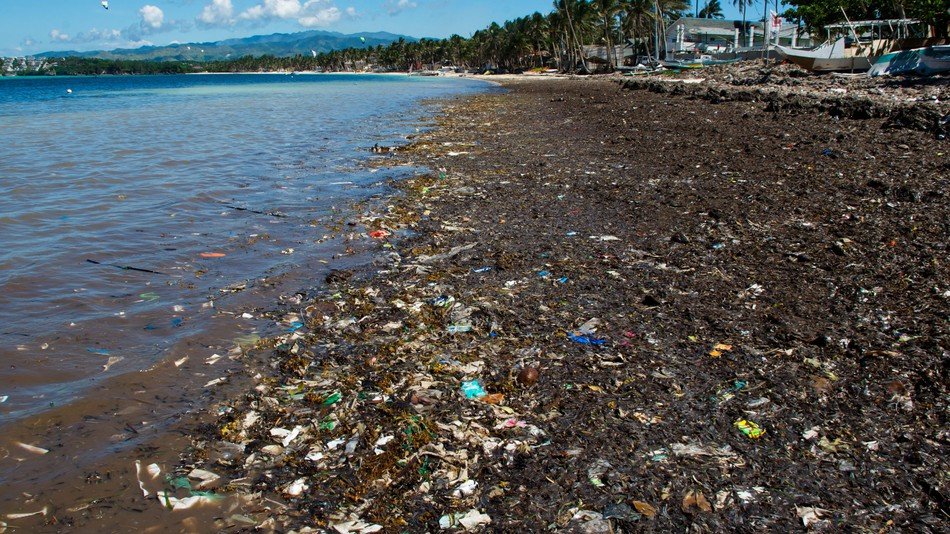Boracay’s Closure: A Double-Edged Sword
Photo by Mashable.com
Boracay island in The Philippines was once a paradise destination for local and international visitors, totaling an annual amount of 2 million tourist arrivals per year. Although, Boracay's closure in 2018 serves as a prime example of what can happen to a beautiful destination if tourism remains unsustainable and unregulated. Continue reading to find out more about the closure of Boracay has had a silver lining for locals and has generated hope for the future tourism prospects on the island.
The Philippines is home to over 7,000 islands with a diverse range of precious environmental surroundings. From its UNESCO World Heritage mountain ranges to its beautiful white sand beaches to its crystal clear blue bodies of water, the Philippines continues to gain popularity as a touristic destination hotspot. With attractions such as island-hopping tours in Palawan, whale shark diving in Oslob, canyoneering in Badian, and trekking through Banaue; the Philippines attracts a wide net of the different types of travelers.
While enjoying the wonders of the Philippines is not a crime – the international dialogue concerning tourism’s effects on both the environment and local communities has sparked a movement towards sustainable travel. Although a portion of tourists are becoming more conscious of their, ‘Travel Footprint’ – it’s the local communities of these touristic destinations that experience the externalities of tourism.
The Environmental Strain of Tourism on Boracay
Boracay is a small island located in central Philippines and is the country’s most famous holiday island with an annual amount of approximately 2 million tourists. It is primarily known for its picturesque resorts, white sand beaches, and aquamarine colored waters.
However, in April of 2018, President Duterte ordered Boracay’s closure after seeing a video of a leaking drainage pipe in Bulabog Beach. He declared the once pristine destination hotspot as a, ‘Cesspool’ that was tainted by the negative effects of tourism. Unchecked construction has ridded the island’s natural beauty, thousands of plastic drinking bottles have filled the shorelines, and waste has polluted the clear blue waters. According to Philippine officials, the island’s closure was a response to its need for environmental rehabilitation.
Although the closure of Boracay was a win for environmental preservation, more than 30,000 locals (17,000 employed by hospitality establishments and another 17,000 informal workers) were vulnerable to displacement, financial loss, and starvation. This is classic example of how local communities of touristic destination hotspots are dependent on tourism. Unfortunately, in the case of Boracay, there was no transition for local communities to adapt their source of food, housing, or income when the island was temporarily closed.
Boracay’s Battle to Preserve the Environment
In addition to the raw beauty home to the Philippines, many tourists claim Filipinos as some of the kindest and warmest people in the world. Many local communities in the Philippines have taken upon initiatives to help protect their surroundings.
Long before the closure of Boracay, many locals felt the need to step up and act in response to the environmental degradation and pollution of tourism. The Boracay Initiative is a sustainable tourism development and stewardship framework that was launched in 2010. Their objective is to conserve and protect what remains of their beaches which attracted tourists in the first place and to restore the eco-balance of its natural environment since the start of the islands’ rapid unsustainable development.
Despite sustainable movements such as the Boracay Initiative existing, the externalities of tourism are so severe that the island was shut down. It is obvious that the local communities of Boracay have the drive, motivation, and passion for preserving their environment.
Boracay’s Current State
During the first 3 months of Boracay’s closure, assault-rifle wielding police were posted at entry points to Boracay to enforce the declaration of the island’s closure. Only residents with identification cards could board ferries on and off the island. Police continue to patrol the beach to enforce a rule prohibiting swimming except in a designated area marked by buoys, while boats are to only sail within 3 kilometers of the shoreline.
Government officials announced that the implementation of the heavy security presence was intended to discourage the upset of those unhappy with Boracay’s closure, including 35,000 people employed in the island’s tourism industry.
The Government of the Philippines has pledged to refurbish the island’s infrastructure, demolish old buildings, and clean up the mess left by years of unchecked growth.
Moving Forward
As a traveler on a well-deserved holiday, its easy to forget about the imprint we leave on the environment of our choice of destination. However, with hotspot closures such as Boracay, it is important to remember to respect the culture, the people, and the environment.
From a traveler’s perspective, holidays come to an end, but from a local’s perspective, the imprint from tourism’s influence on their home lasts forever.
Let’s not let another local community suffer like Boracay.

